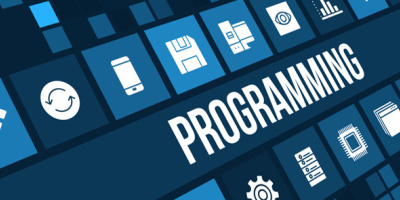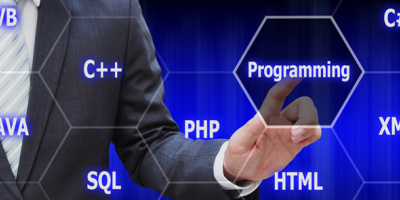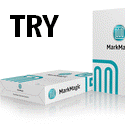The future of storing ILE source code is closer than you think.
In this long-awaited article, I'm going to talk about how to store your RPG and CL code on the IFS and what steps you need to take in order to create objects out of that source.
First, you should know that CRTRPGMOD, CRTBNDRPG, and CRTSQLRPGI all have a parameter to specify a stream file for source. Thanks to IBM, this makes compiling RPG programs much easier. But what about CL? There isn’t a stream file parameter on CRTBNDCL, so what options do we have? I’ll come to that in a little while. If you work with other ILE languages, you might be glad to hear that the C, C++, and COBOL “Create” commands also have stream file parameters.
Next, I’m going to talk about how to organize your source. Let's imagine there is a library called MYPROG that holds two source physical files, one called QRPGLESRC and another called QCLLESRC. Now you have to consider how you'd lay that out in an IFS-styled manner. You might have a directory named MYPROG, with two directories below that called QRPGLESRC and QCLLESRC. It would look something like this:
/MYPROJ
- /QRPGLESRC
- /QCLLESRC
As you can see, this is how you'd normally lay out your source code, but instead of libraries and source physical files, we just have regular directories. For this example, I have created MYPROJ in the IFS root, but you may create it wherever you like, including your home directory.
Creating Your First Program!
Creating your first program is just as simple as it would be if you were compiling from a source member. First, you need to create a stream file. For the sake of example, I created HELLOWORLD.rpgle within the QRPGLESRC directory.
Now bear in mind, stream file names do not have a logical maximum length. In theory, you could have RPG stream files named HELLOWORLDHOWAREYOU.sqlrpgle, and it wouldn't make a difference. But when creating an object from this source, that object will still have its 10-character limit. Don't give stream file long names just because you can.
So now I have created HELLOWORLD.rpgle, I am going to place some source code in there so it can be compiled:
|
**FREE
Dcl-S Text Char(11);
Text = 'Hello world';
DSPLY Text;
*InLR = *On; Return; |
To compile this, I’m going to use CRTBNDRPG. Luckily, since the stream file name (without the extension) is 10 characters, I can give the object the same name. The only difference here is that you can’t pass in a source member, but instead you pass in the path to the stream file you want to compile—in this case, /MYPROJ/QRPGLESRC/HELLOWORLD.rpgle.
|
CRTBNDRPG PGM(*CURLIB/HELLOWORLD) SRCSTMF('/MYPROJ/QRPGLESRC/HELLOWORLD.rpgle') REPLACE(*YES) OPTION(*EVENTF) DBGVIEW(*SOURCE) |
Compiling CL Source
Compiling CL source can be a touchy subject. In fact, what I’m about to tell you doesn't apply only to CL, but also display files, commands, and a few others.
I'm afraid to tell you that CRTBNDCL does not have a stream file parameter. There is an RFE to add support for CL in stream files, but we've heard nothing from IBM on the matter; it could be a while before we even see it, let alone are able to use it.
This means we need to create our own process to create our CL programs. What do I mean by “process,” you ask? You need to have a way to automate compiling CL from the IFS.
A common method and the one I will be using is having a program to automate the following steps:
1.Copy the stream file to a temporary member (replace this member if it already exists too).
2.Create the CL program from the temporary member.
Might seem easy, right? It's the best we have right now, but there is one small thing to remember: If you create a temporary member within a source file in QTEMP and still want the ability to debug the CL, you will need to use DBGVIEW(*LIST) in your CRTBNDCL command. You will find that, after you start debugging, *LIST is not the best thing to do. Another option is to not make it a temporary member. Instead, copy the stream file into a member that resides in the same library you are creating the object in and then use DBGVIEW(*SOURCE) to retain the source.
Seems like a lot just to create a CL from the IFS, doesn’t it? There is an easier way in the meantime, but that is until IBM gives us the stream file parameter. I mentioned this in my previous article , but Brian Garland's CRTFRMSTMF is a great way to do this and could easily be part of your process to create CLs, display files, etc. The good news is that Brian has made it open source for us all to use.
CRTFRMSTMF allows you to compile non-traditional things like CL from the IFS. It actually uses the process I described earlier; it creates a temporary memory and runs the compile command for us. The best way to try it is to obtain the source for this project and compile it on your machine so you have access to the CRTFRMSTMF command.
So let's say we have a CL program called MYCLPGM.clle that lives in the QCLLESRC directory I created earlier.
|
PGM
DCL VAR(&TEXT) TYPE(*CHAR) LEN(11)
CHGVAR VAR(&TEXT) VALUE('Hello world') SNDPGMMSG MSG(&TEXT)
ENDPGM |
Now, I can make use of the process to create this CL, but for this article I will show both methods.
Process 1
|
CRTSRCPF FILE(QTEMP/QCLLESRC) RCDLEN(112)
CPYFRMSTMF FROMSTMF('/MYPROJ/QCLLESRC/MYCLPGM.clle') TOMBR('/QSYS.lib/QTEMP.lib/QCLLESRC.file/MYCLPGM.mbr') MBROPT(*ADD)
CRTBNDCL PGM(MYCLPGM) SRCFILE(QTEMP/QCLLESRC) SRCMBR(*PGM)
CALL MYCLPGM |
Process 2 (Automated)
|
CRTFRMSTMF OBJ(*LIBL/MYCLPGM) CMD(CRTBNDCL) STMF('/MYPROG/QCLLESRC/MY
CALL MYCLPGM |
What’s Next?
I hope this article has shown you how easy it can be to store source on the IFS. It really is the future and will allow development and dev ops processes to become much easier.
In the next article, I plan to show you how to start using Git on this MYPROJ directory to maintain your source code.






















 More than ever, there is a demand for IT to deliver innovation. Your IBM i has been an essential part of your business operations for years. However, your organization may struggle to maintain the current system and implement new projects. The thousands of customers we've worked with and surveyed state that expectations regarding the digital footprint and vision of the company are not aligned with the current IT environment.
More than ever, there is a demand for IT to deliver innovation. Your IBM i has been an essential part of your business operations for years. However, your organization may struggle to maintain the current system and implement new projects. The thousands of customers we've worked with and surveyed state that expectations regarding the digital footprint and vision of the company are not aligned with the current IT environment. TRY the one package that solves all your document design and printing challenges on all your platforms. Produce bar code labels, electronic forms, ad hoc reports, and RFID tags – without programming! MarkMagic is the only document design and print solution that combines report writing, WYSIWYG label and forms design, and conditional printing in one integrated product. Make sure your data survives when catastrophe hits. Request your trial now! Request Now.
TRY the one package that solves all your document design and printing challenges on all your platforms. Produce bar code labels, electronic forms, ad hoc reports, and RFID tags – without programming! MarkMagic is the only document design and print solution that combines report writing, WYSIWYG label and forms design, and conditional printing in one integrated product. Make sure your data survives when catastrophe hits. Request your trial now! Request Now. Forms of ransomware has been around for over 30 years, and with more and more organizations suffering attacks each year, it continues to endure. What has made ransomware such a durable threat and what is the best way to combat it? In order to prevent ransomware, organizations must first understand how it works.
Forms of ransomware has been around for over 30 years, and with more and more organizations suffering attacks each year, it continues to endure. What has made ransomware such a durable threat and what is the best way to combat it? In order to prevent ransomware, organizations must first understand how it works. Disaster protection is vital to every business. Yet, it often consists of patched together procedures that are prone to error. From automatic backups to data encryption to media management, Robot automates the routine (yet often complex) tasks of iSeries backup and recovery, saving you time and money and making the process safer and more reliable. Automate your backups with the Robot Backup and Recovery Solution. Key features include:
Disaster protection is vital to every business. Yet, it often consists of patched together procedures that are prone to error. From automatic backups to data encryption to media management, Robot automates the routine (yet often complex) tasks of iSeries backup and recovery, saving you time and money and making the process safer and more reliable. Automate your backups with the Robot Backup and Recovery Solution. Key features include: Business users want new applications now. Market and regulatory pressures require faster application updates and delivery into production. Your IBM i developers may be approaching retirement, and you see no sure way to fill their positions with experienced developers. In addition, you may be caught between maintaining your existing applications and the uncertainty of moving to something new.
Business users want new applications now. Market and regulatory pressures require faster application updates and delivery into production. Your IBM i developers may be approaching retirement, and you see no sure way to fill their positions with experienced developers. In addition, you may be caught between maintaining your existing applications and the uncertainty of moving to something new. IT managers hoping to find new IBM i talent are discovering that the pool of experienced RPG programmers and operators or administrators with intimate knowledge of the operating system and the applications that run on it is small. This begs the question: How will you manage the platform that supports such a big part of your business? This guide offers strategies and software suggestions to help you plan IT staffing and resources and smooth the transition after your AS/400 talent retires. Read on to learn:
IT managers hoping to find new IBM i talent are discovering that the pool of experienced RPG programmers and operators or administrators with intimate knowledge of the operating system and the applications that run on it is small. This begs the question: How will you manage the platform that supports such a big part of your business? This guide offers strategies and software suggestions to help you plan IT staffing and resources and smooth the transition after your AS/400 talent retires. Read on to learn:
LATEST COMMENTS
MC Press Online